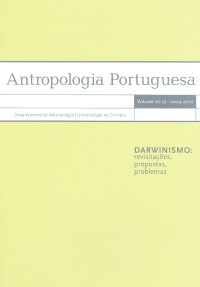Please use this identifier to cite or link to this item:
https://hdl.handle.net/10316.2/28664| Title: | «A arte pós-Darwin»: política dos artefactos e da tecnologia a partir de uma experiência etnográfica | Authors: | Sousa, Liliana Gil | Keywords: | Agency;art and science;robotic art;bioart;nature;life;Agência;arte e ciência;arte robótica;bioarte;natureza;vida | Issue Date: | 2010 | Publisher: | CIAS - Centro de Investigação em Antropologia e Saúde | Abstract: | Regarding the subject of the place of biotechnosciences in contemporary
society, this article attempts to explore the political dimension of technologies and
artifacts based on a field experience at the public exhibition Inside: Arte e Ciência.
Considering the art and science approach as a potential element of amplification of
the public debate on artistic and scientific techniques and practices, the exhibition
was thought of as a special situation, a collective environment which, due to its
properties, awakens impressions in its experience, condensing tensions between
meanings and relations between several groups of agents (the construction of
situations proposal, from the Situationist International, and the case studies of the
Manchester School, were primary sources of inspiration). With a particular focus on
the idea of “technological choice” and of art and technology as systems of action,
antagonist views from public and artists regarding the manipulation of biological and
artificial life – based on different representations of life and nature –, the artifact’s agency and authorship rights, are highlighted. As concluding remarks, the relative everyday life alienation from these matters and the importance of ethnographically studying initiatives of this nature, which induce reflection and allow contact between usually unarticulated groups, are recognized. Enquadrado no largo tema do lugar das biotecnociências na sociedade contemporânea, neste artigo procurou-se explorar a dimensão política das tecnologias e artefactos a partir de uma experiência de terreno na exposição Inside: Arte e Ciência. Tomando a corrente artística como uma potencial forma de amplificação do debate público sobre as técnicas e práticas artísticas e científicas, pensou-se a exposição como uma situação especial, um ambiente colectivo que, pelas suas propriedades, desperta impressões na sua experiência, condensando tensões entre significações e relações entre vários grupos de agentes (a proposta de construção de situações, da Internacional Situacionista, e os estudos de caso à maneira da Escola de Manchester, foram inspirações primárias). Com particular enfoque na ideia de “escolha técnica” e na de arte e tecnologia como sistemas de acção, destacam-se visões concorrentes de público e artistas sobre a manipulação da vida biológica e artificial – sustentadas em diferentes representações de vida e de natureza –, a agência dos artefactos e os direitos de autor. Conclui-se o relativo alheamento quotidiano destas questões e a importância de acompanhar etnograficamente iniciativas do género, que suscitam reflexão e põem em diálogo grupos normalmente desarticulados. |
URI: | https://hdl.handle.net/10316.2/28664 | ISSN: | 2182-7982 | DOI: | 10.14195/2182-7982_27_6 | Rights: | open access |
| Appears in Collections: | Antropologia Portuguesa |
Files in This Item:
| File | Description | Size | Format | |
|---|---|---|---|---|
| ap26-27_artigo7.pdf | 1.64 MB | Adobe PDF |  |
Items in DSpace are protected by copyright, with all rights reserved, unless otherwise indicated.
